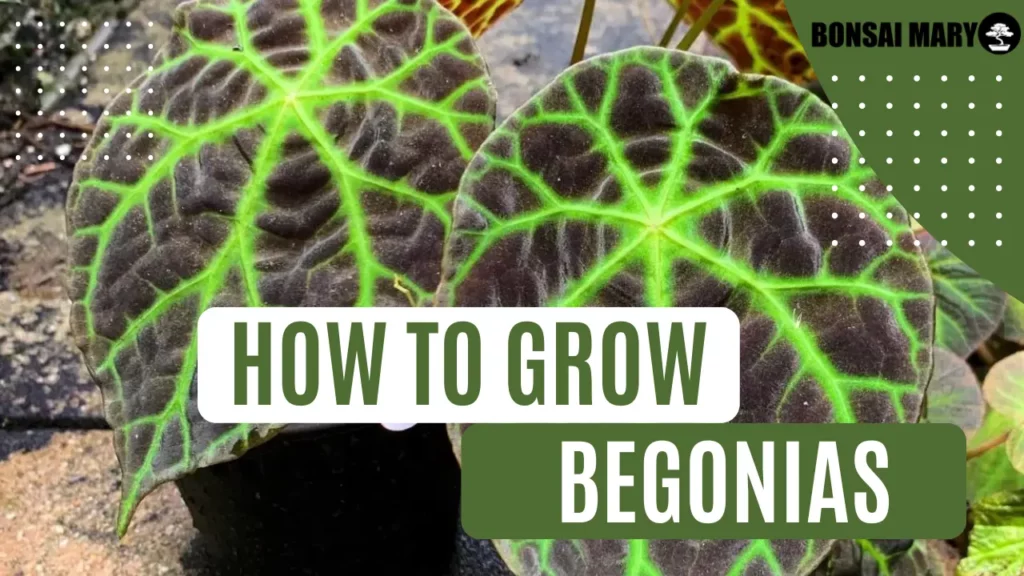Begonias are beloved for their stunning floral display and attractive foliage. With their diverse range of shapes, sizes, and colors, these plants offer a variety of choices to add beauty to your garden or indoor collection. Some Begonias captivate with vibrant and eye-catching flowers, while others focus on intricate foliage patterns.
No products found.
Understanding the Appearance of Begonias
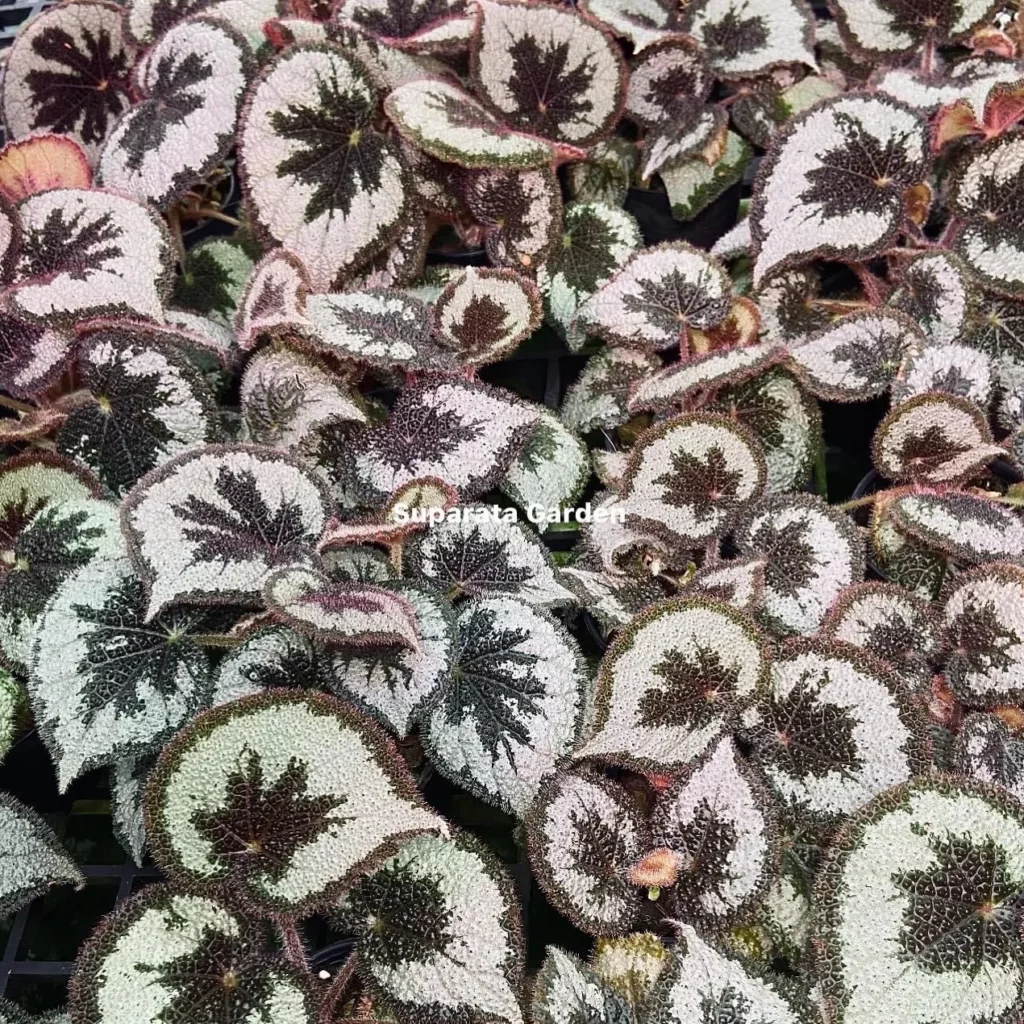


When it comes to Begonia appearance, you’ll find blooms in shades of red, pink, orange, yellow, and white, adding a vibrant splash of color to any space. The flowers can be single or double-petaled, and some varieties have petals with unique textures, like ruffled or fringed edges.
Beyond their blossoms, Begonias boast foliage that ranges from glossy to hairy and comes in shapes like heart-shaped, rounded, or asymmetrical. The leaves often feature intricate patterns, such as silver spots, stripes, or delicate veins.
To choose the ideal Begonia varieties for your garden or indoor area, understanding their appearances is crucial. Whether you’re drawn to their floral display or foliage beauty, consider the different Begonia types and their unique characteristics. This knowledge will guide you in selecting the perfect Begonias to enhance your space with their distinct charm and allure.
Meeting Begonias’ Light Requirements
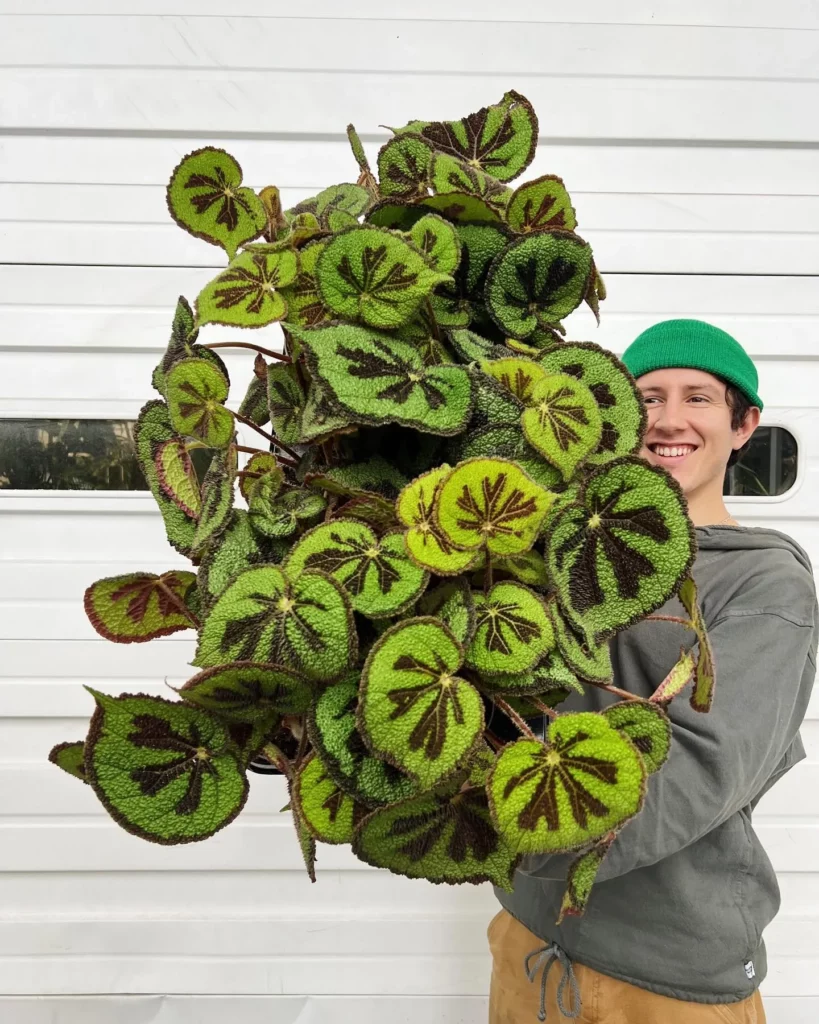
Begonias require specific light conditions to thrive and produce optimal growth and blooming. Understanding their light requirements is essential for the health and beauty of your Begonias.
1. Bright, Indirect Light
Many Begonias prefer bright, indirect light. Place them in a location where they can receive filtered sunlight or in a spot with bright, indirect light. This can be near a north or east-facing window or in an area that receives partial shade throughout the day.
2. Shade-Tolerant Varieties
Some Begonia varieties can tolerate lower light conditions, making them suitable for shady areas or indoor settings. These varieties are great choices for rooms with limited natural light, such as north-facing rooms or rooms with small windows.
3. Avoid Direct Sunlight
Avoid exposing Begonias to direct sunlight, especially during the intense midday sun. Direct sunlight can scorch the delicate leaves of Begonias and lead to leaf burn or wilting.
4. Adjusting Light Intensity
No products found.
If your Begonias are not receiving enough light, you can supplement their light requirements by using artificial grow lights. These lights can help provide the necessary light spectrum for healthy growth when natural light is limited.
Watering Begonias: Finding the Perfect Balance



Proper watering is crucial for the health of your Begonias. These beautiful plants thrive when their moisture needs are met. However, striking the right balance can be a challenge. Overwatering or underwatering can have detrimental effects on your Begonias’ vitality.
To ensure optimal growth and blooming, it’s important to understand the ideal watering techniques for Begonias. Here are some tips to help you find the perfect balance:
No products found.
- Check the moisture level: Before watering your Begonias, check the top inch of the soil. If it feels dry to the touch, it’s time to water. However, if it still feels slightly moist, hold off on watering until the soil dries out a bit more.
- Drainage is key: Begonias dislike sitting in waterlogged soil, so it’s important to ensure proper drainage. Choose pots with drainage holes and use a well-draining potting mix that allows excess water to flow out.
- Watering quantity: When it’s time to water, thoroughly saturate the soil until water begins to flow out of the drainage holes. This ensures that the roots receive adequate moisture.
- Avoid waterlogged soil: Begonias prefer slightly moist soil, so be careful not to overwater them. Watering once every 7-10 days, or when the top inch of soil feels dry, is generally sufficient.
Fertilizing Begonias for Nutrient-Rich Soil

Begonias require regular fertilization to maintain healthy growth and ensure nutrient-rich soil. By understanding their specific nutrient requirements and using the right organic fertilizers, you can provide the necessary nourishment for vibrant blooms. Follow a feeding schedule to ensure that your Begonias receive the proper nutrients at the right time.
No products found.
Understanding Begonias’ Nutrient Requirements
To fertilize your Begonias effectively, it’s essential to know their specific nutrient requirements. Begonias generally need a balanced fertilizer that contains equal parts of nitrogen (N), phosphorus (P), and potassium (K). These essential macronutrients support overall plant health, foliage growth, and flower production.
The ideal NPK ratio for Begonias is 10-10-10 or 20-20-20. This balanced ratio provides a good foundation of nutrients for the plants. However, different Begonia varieties may have slightly different nutrient preferences, so it’s best to consult the plant’s care instructions or a gardening specialist for specific recommendations.
Choosing Organic Fertilizers for Begonias
Organic fertilizers are an excellent choice for nurturing Begonias and maintaining healthy soil. These natural fertilizers come from plant or animal sources and provide nutrients in a slow-release form, ensuring a steady supply for your plants.
No products found.
Some popular organic fertilizers for Begonias include:
- Compost: Rich in organic matter and nutrients, compost improves soil fertility and structure.
- Manure: Well-rotted manure, such as cow or chicken manure, adds nutrients and improves soil texture.
- Bone Meal: High in phosphorus, bone meal promotes root development and flowering.
- Fish Emulsion: A liquid fertilizer made from fish byproducts, fish emulsion provides essential nutrients and micronutrients.
- Seaweed Extract: Derived from seaweed, this organic fertilizer boosts plant growth and enhances resistance to stress.
Developing a Feeding Schedule
To ensure your Begonias receive the proper nutrients consistently, it’s beneficial to establish a feeding schedule. A feeding schedule helps you keep track of when and how often to fertilize your plants.
Generally, Begonias benefit from monthly feeding during the active growing season (spring and summer). However, individual feeding requirements may vary based on factors like plant size, soil fertility, and environmental conditions. Adjust the feeding frequency accordingly, ensuring you’re not over-fertilizing, which can lead to nutrient burn or damage to the plants.
Potting Begonias for Optimal Growth
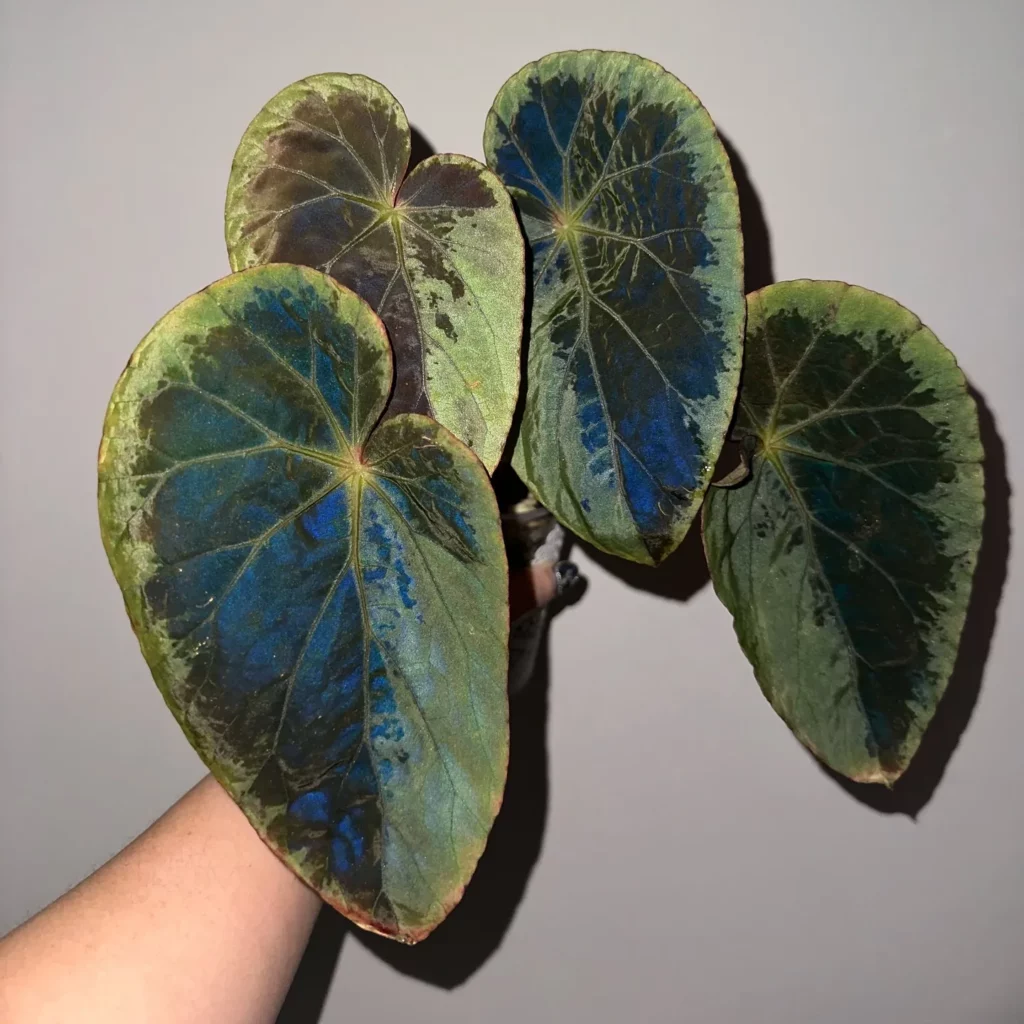


When it comes to potting your Begonias, choosing the right container and creating the perfect soil mix are key factors in ensuring their optimal growth and development. Here are some best practices to follow:
- Container Size: Select a pot that allows for adequate root expansion. A general rule of thumb is to choose a container that is approximately 1-2 inches larger in diameter than the current root ball.
- Soil Mix: Begonias thrive in well-draining soil. Prepare a mixture of equal parts high-quality potting soil, perlite, and peat moss. This blend provides the right balance of moisture retention and proper drainage.
- Drainage: Ensure that the chosen container has drainage holes at the bottom to prevent waterlogging. This helps prevent root rot and other water-related issues.
- Repotting: Begonias may require repotting every 1-2 years to accommodate their growth. Signs that it’s time to repot include roots circling the edges of the pot or noticeable stunted growth. When repotting, gently loosen the root ball and place it into a slightly larger container with fresh soil mix.
Propagating Begonias: Multiplying Your Collection

Proven methods of propagating Begonias can help you expand your collection or share these stunning plants with others. There are several techniques you can use for successful Begonia propagation, including stem cuttings, division, and leaf cuttings.
Stem Cuttings
One of the most common and effective ways to propagate Begonias is through stem cuttings. Here’s how:
- Select a healthy, mature Begonia plant with strong stems.
- Using a clean, sharp pair of scissors or garden shears, take a 4-6 inch stem cutting just below a node.
- Remove the lower leaves from the cutting, leaving only a few leaves at the top.
- Dip the cut end of the stem in a rooting hormone powder to encourage root growth.
- Place the cutting in a well-draining potting mix and water thoroughly.
- Keep the cutting in a warm, humid environment with bright, indirect light.
- Within a few weeks, roots should begin to form, indicating successful propagation.
No products found.
Division
Another method of propagation is through division, which works well for Begonias that have multiple stems or rhizomes. Here’s what you need to do:
- Gently remove the Begonia plant from its pot or garden bed.
- Inspect the plant for natural divisions, where stems or rhizomes can be separated.
- Using a clean knife or garden tool, carefully divide the plant into smaller sections.
- Ensure each division has a healthy stem or rhizome along with some leaves.
- Plant each division in a suitable container or garden space, making sure to provide proper care and conditions.
No products found.
Leaf Cuttings
Leaf cuttings are a unique way to propagate certain types of Begonias. Follow these steps:
- Select a healthy Begonia leaf with a long petiole.
- Using a clean knife or scissors, make a clean cut near the base of the leaf petiole.
- Insert the leaf petiole into a tray filled with a well-draining potting mix.
- Ensure that the leaf remains upright and slightly buried in the soil mix.
- Keep the tray in a warm, humid environment with indirect light.
- Over time, tiny plantlets will develop from the base of the leaf, indicating successful propagation.
- Once the plantlets have grown to a suitable size, they can be potted individually.
The Growth and Development of Begonias



Begonias are fascinating plants that go through distinct growth stages, transforming from small seedlings into mature plants. Understanding the growth timeline of Begonias will help you anticipate their development, size, shape, and the exciting moment when they burst into bloom.
Begonia Growth Stages:
- Seed Germination: The begonia’s life cycle begins with the germination of its seeds. This is when the seeds start sprouting and the first signs of life emerge.
- Seedling Stage: As the begonia grows, it enters the seedling stage. At this stage, the plant develops its first true leaves and begins to establish its root system.
- Juvenile Stage: The juvenile stage is characterized by the begonia’s rapid growth. The plant develops more leaves and stems during this phase, but it has not yet reached its full size.
- Adult Stage: In the adult stage, the begonia has reached its full size and maturity. It has a well-established root system and is capable of producing flowers.
Begonia Size and Shape:
The size and shape of begonias can vary depending on the variety. Some begonias are compact and bushy, while others are tall and upright. It’s essential to consider the mature size of your begonia when selecting the right location for planting or potting.
Flowering Timeline:
Once your begonias reach the adult stage, they have the potential to produce beautiful blooms. The flowering timeline will depend on the specific variety of begonia you have. Some begonias bloom year-round, while others have specific blooming periods during spring, summer, or fall. Consult the plant tags or research the specific variety to determine when you can expect your begonias to display their vibrant colors.
Dormancy Periods:
Begonias may enter periods of dormancy, typically during the winter months. Dormancy is a natural part of their growth cycle and allows the plants to conserve energy. During this time, begonias may appear less active or even lose their leaves.
It is crucial to adjust your care routine during dormancy, providing less water and limited sunlight. This allows the plant to rest and prepare for the upcoming growing season.
Identifying and Addressing Common Pests and Diseases

Despite their resilience, Begonias can sometimes fall victim to pests and diseases. It’s important to be familiar with the common problems that can affect your Begonias and know how to address them promptly in order to keep your plants healthy and thriving.
By taking preventive measures and understanding treatment options, you can ensure that your Begonias remain pest-free and disease-resistant.
Pests that can affect Begonias:
- Aphids: These small, soft-bodied insects feed on the sap of Begonia plants, causing stunted growth and distorted foliage.
- Spider mites: These tiny pests can infest the leaves of Begonias, leading to webbing, yellowing, and leaf drop.
- Mealybugs: Mealybugs are white, cotton-like insects that can cluster in the leaf axils and undersides, causing yellowing and weakening of the plant.
Signs of diseases to watch out for:
- Mildew: Powdery mildew appears as a white, powdery coating on the leaves of Begonias, often causing them to become deformed and yellow.
- Leaf spot: This fungal disease causes dark spots to form on the leaves of Begonias and can lead to leaf drop if left untreated.
- Root rot: Overwatering or poor drainage can lead to root rot, which is characterized by wilting, yellowing foliage, and a rotting smell from the roots.
To prevent Begonia pests and diseases:
- Inspect your Begonias regularly for any signs of pests or diseases.
- Keep your Begonias well-maintained and healthy with proper care and maintenance.
- Ensure proper air circulation around your plants by spacing them adequately.
- Avoid overwatering, as excess moisture can create favorable conditions for pests and diseases.
- Keep your gardening tools clean and disinfected to prevent the spread of diseases.
If you notice pests or diseases on your Begonias, there are treatment options available:
- Organic insecticidal soap or neem oil can help control common pests like aphids and mealybugs.
- If the infestation is severe, consider using chemical insecticides, following the instructions carefully.
- For fungal diseases, such as powdery mildew or leaf spot, prune and remove affected leaves and apply fungicides if necessary.
- If root rot is present, it’s important to address the underlying cause, such as improving drainage or repotting the plants in fresh, well-draining soil.
Revitalizing Distressed Begonias: Troubleshooting Guide
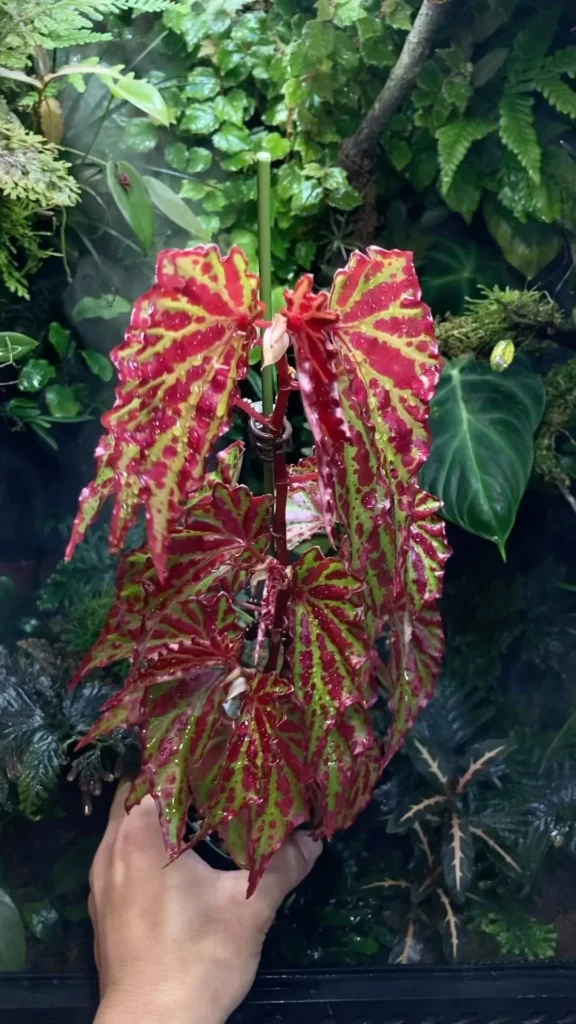

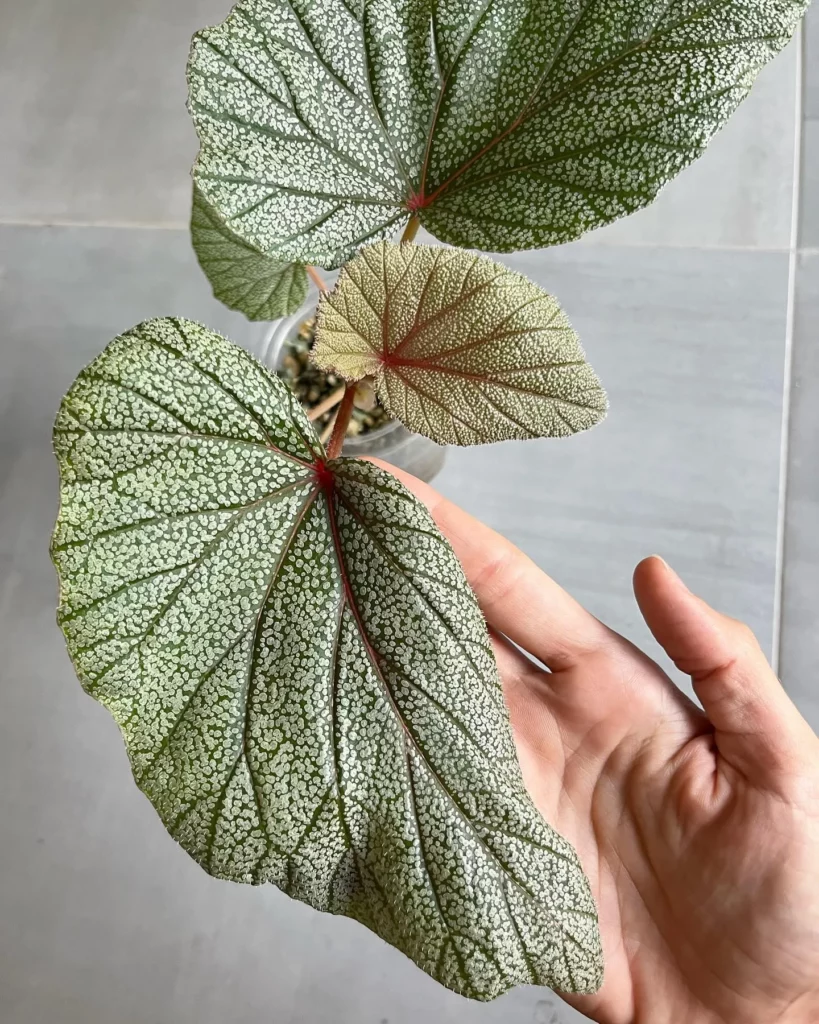
Begonias, like any other plants, can experience stress and encounter various issues that impact their overall well-being. It’s important to be able to identify the signs of distressed Begonias and take appropriate steps to revive them back to their thriving state.
In this troubleshooting guide, we will explore common problems such as yellowing foliage, wilting, and root rot, and provide you with practical tips to rejuvenate your Begonias.
Signs of Plant Stress in Begonias
- Yellowing foliage: Discoloration or yellowing of leaves can be an indication of nutrient deficiency, pest infestation, improper watering, or exposure to extreme temperatures.
- Wilting: Drooping or wilting leaves are often a sign of underwatering, overwatering, or root issues.
- Root rot: Foul odor, mushy roots, and dark discoloration are signs of root rot, a fungal infection caused by overwatering or poorly draining soil.
How to Revive Distressed Begonias
- Assess watering practices: Check the moisture levels of the soil. Adjust your watering routine if necessary, ensuring that you are neither overwatering nor underwatering your Begonias. Verify that the pot has proper drainage to prevent waterlogged roots.
- Inspect the roots: Gently remove the Begonia from its pot and examine the roots for signs of rot. Trim away any affected roots using clean, sterilized tools, and repot the plant in fresh, well-draining soil.
- Review lighting conditions: Ensure that your Begonia is receiving the appropriate amount of light. Some varieties prefer bright, indirect light, while others thrive in shade. Adjust the location accordingly.
- Check for pests: Inspect your Begonias for common pests such as aphids, spider mites, or mealybugs. Treat the infestation with safe and effective methods such as neem oil or insecticidal soap.
- Nutrient supplementation: If your Begonia shows signs of nutrient deficiency such as pale leaves, consider providing it with a balanced fertilizer specifically formulated for Begonias. Follow the instructions carefully.
Seasonal Care Tips for Begonias

Begonias are beautiful plants that require different care throughout the seasons to thrive. By understanding their seasonal needs, you can ensure that your Begonias stay healthy and vibrant all year round. Whether it’s winter, summer, or the transitions between seasons, here are some essential care guidelines to follow:
Winter Care
During the winter months, Begonias need extra attention to survive the colder temperatures. Here’s how you can care for your Begonias during winter:
- Keep Begonias indoors or in a protected area to shield them from frost and freezing temperatures.
- Place Begonias in a well-lit location that receives bright, indirect sunlight.
- Water Begonias sparingly, allowing the soil to dry out slightly between waterings to prevent root rot.
- Monitor humidity levels and consider using a humidifier or placing a tray of water near your plants to increase humidity.
Summer Care
During the summer months, Begonias thrive in warmer conditions and require specific care to support their growth. Here’s how to care for your Begonias during summer:
- Place Begonias in a location that receives bright, indirect sunlight, avoiding direct exposure to intense midday sun.
- Water Begonias regularly, keeping the soil consistently moist but not waterlogged.
- Monitor humidity levels, as Begonias appreciate higher humidity. Mist the leaves or use a humidifier if necessary.
- Consider providing shade or using a sheer curtain during the hottest parts of the day to protect Begonias from excessive heat.
Transitions Between Seasons
During the transitions between seasons, Begonias may require adjustments to their care routine. Here are some tips to help your Begonias adapt:
- Gradually acclimate Begonias to new light conditions when transitioning from indoors to outdoor or vice versa.
- Adjust watering frequency based on changing temperature and humidity levels.
- Monitor your Begonias closely for any signs of stress or nutrient deficiencies, and address them promptly.
- Protect Begonias from extreme temperature fluctuations by providing insulation or moving them to a more suitable location.
Wrapping Up Your Begonia Care Journey
Congratulations on completing your journey of caring for Begonias! With the knowledge you have gained from this comprehensive care guide, you are now fully equipped to ensure the health and vitality of your Begonias.
By implementing a consistent plant care routine, you can create the perfect environment for your Begonias to thrive and produce vibrant blooms throughout the year.
To maintain healthy Begonias, make sure to provide them with the optimal light conditions and water them appropriately. Remember to find the right balance between under and overwatering, allowing the soil to dry out slightly before watering again.
Additionally, fertilize your Begonias regularly with the appropriate nutrients to keep them healthy and nourished.
Don’t forget to pot your Begonias in well-draining soil and choose the right-sized containers to support their growth. If you want to expand your plant collection or share the joy of Begonias, try your hand at propagating them using stem cuttings, division, or leaf cuttings.
This will allow you to multiply your Begonias and fill your space with these gorgeous plants.
Remember, by following the tips and advice provided in this guide, you can create a thriving plant care routine that promotes the growth and overall well-being of your Begonias. With your dedication and attention to detail, you’ll soon witness your Begonias transform into healthy, vibrant plants, bringing beauty and joy to your home or garden.
FAQ
How often should I water my Begonias?
The frequency of watering your Begonias will depend on various factors such as the type of Begonia, the current weather conditions, and the potting mix used. As a general guideline, check the moisture level of the soil and water when the top inch feels slightly dry to the touch. Avoid overwatering, as Begonias can be susceptible to root rot.
What type of fertilizer should I use for my Begonias?
Begonias benefit from a balanced fertilizer with equal amounts of nitrogen, phosphorus, and potassium. Look for fertilizers specifically formulated for flowering plants or houseplants. Organic options such as compost tea or diluted fish emulsion can also provide nutrients to your Begonias. Follow the package instructions for application rates and frequency.
Can I propagate Begonias from leaf cuttings?
Yes, Begonias can be propagated from leaf cuttings. Choose a healthy leaf with a visible vein and cut it into sections, making sure each section has a piece of the main vein. Place the leaf sections on a tray with a well-draining potting mix and lightly press them into the soil. Keep the soil moist and provide bright, indirect light until new plants emerge.
How do I prevent pests from attacking my Begonias?
To prevent pests such as aphids, mealybugs, and spider mites from attacking your Begonias, try to maintain a clean and healthy growing environment. Regularly inspect your plants for any signs of pests, especially on the undersides of leaves. Consider using natural pest control methods like neem oil or introducing beneficial insects like ladybugs to control pest populations.
What should I do if my Begonias’ foliage starts turning yellow?
Yellowing foliage in Begonias can indicate various issues, including overwatering, underwatering, nutrient deficiencies, or pest infestations. Assess the watering practices, ensure proper drainage, and check for signs of pests. Adjust watering, provide appropriate nutrients, and address any pest problems to help restore the health of your Begonias.
Can Begonias tolerate full sunlight?
While some Begonia varieties can tolerate full sunlight, most prefer bright, indirect light or partial shade. Direct sunlight can scorch their leaves and cause damage. It’s best to place your Begonias in a location where they receive morning sunlight and are shaded from intense afternoon sun.
How often should I repot my Begonias?
Begonias generally benefit from being repotted every 1 to 2 years. Signs that your Begonias need repotting include roots growing through the drainage holes, stunted growth, or a pot that feels top-heavy. When repotting, choose a pot slightly larger than the current one and use a well-draining potting mix.
Do Begonias go dormant?
Yes, Begonias can go dormant, especially during the winter months. During dormancy, the plant’s growth slows down, and it may shed some leaves. Reduce watering and provide cooler temperatures to mimic their natural dormant period. Resume regular care and watering when you notice new growth emerging in the spring.
How do I prevent root rot in my Begonias?
Root rot in Begonias is often caused by overwatering and poor drainage. To prevent root rot, ensure your Begonias are planted in a well-draining potting mix and choose containers with drainage holes. Water your Begonias only when the top inch of soil feels slightly dry, and always discard any excess water that collects in the saucer or tray.
Can Begonias be grown indoors?
Yes, Begonias can be grown indoors successfully. Choose Begonia varieties that are well-suited for indoor conditions. Provide them with bright, indirect light near a window, and maintain a consistent temperature between 65°F to 75°F (18°C to 24°C). Indoor humidity can be increased by placing a tray of water near the plants or using a room humidifier.

